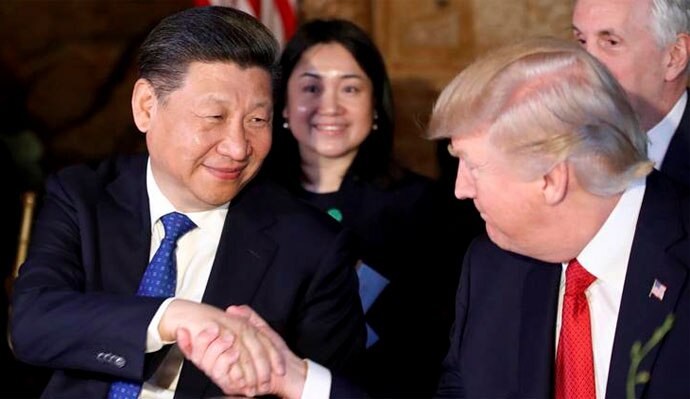Why US-China trade war should worry India

The war of words between the US and China on the trade front has now escalated into a full-fledged trade war, much sooner than anyone could have anticipated. In retaliation to President Trump’s order imposing tariffs on $50 billion (Rs 3 lakh crore)worth of imports from China, the latter has slapped $3 billion trade restrictions, targeting imports from the US.
The number $3 billion might look tiny compared to what the US has imposed on China, but the writing on the wall is all too clear: China is acting as a cautionary step, issuing a warning of sorts to the US to pull away from the trade sanctions, leaving itself enough room to escalate its barriers if the US shows no signs of relenting. This leaves India, whose steel and aluminium exports have also been affected by the US imposition of tariffs earlier this month, caught in the crossfire. With a trade gap of $31 billion with the US in India’s favour, the latter may also come in for more trade restrictions, especially since Trump has been unhappy with the import duties on American goods imposed by India.
What is Trump’s actual grouse? He had come to power fully capitalising a rising resentment in the US against things non-American, be it immigrants, who were seen taking away jobs or destabilising the country through nefarious activities, as well as increasing imports into the country from the developing world — China, Brazil, Russia and India, among others. These cheaper imports — which also include cheap labour force — have, according to Trump, played havoc on the US economy, crippling domestic industries and throwing domestic workers out of employment.
His call to "make America great again" struck a chord with his electorate, so he needs to live by the promises he made. But while proceeding to encourage domestic manufacturing and create more jobs, what Trump has done is destabilising the current world trade order, and entering into a no-holds-barred spat with China, which is bound to have big repercussions on the world economy at large. China has a trade surplus of $305 billion (Rs 19 lakh crore) with the US, so it is tempting to think that the former will be a big loser in the bargain.
However, experts say that China also has the ability to inflict significant economic harm to the US and can also cause supply chain disruptions to US manufacturers, who source important raw materials from China. The overall impact on China’s GDP due to the sanctions would be a fraction of a percentage, say experts, but trade sanctions could jack up the price of goods for US consumers, something that will stoke inflation and make the US Federal Reserve more hawkish than it has already been. Global stock markets have already fallen at the prospects of a trade war, but will now remain more volatile as the tensions continue to rise on the world trade horizon.

What are the lessons for India in this heightening trade conflict? While exports of steel and aluminium to the US were together worth just $1.6 billion, there may not be a case to be immediately threatened. However, this does not mean that India can remain complacent and not challenge these trade tariffs in the World Trade Organisation (WTO).
Especially so, since this is not the first time in the recent past that the US has targeted India on trade related issues. In 2014, the US International Trade Commission had launched an investigation into India’s trade and investment policy to identify areas where its trade policies have been hurting the US. Experts feel that India should not be cowed down by such tactics, since it is likely that the US will come up with certain intellectual property (IP) sanctions as well, in future, as it has done to China.
The US also wants India to stop what it calls export subsidy programmes, claiming that they harm American workers. The US has argued that the incentives violate WTO agreements as India is no longer below the economic benchmark of $1,000 (Rs 65,000) per capita gross national income.
These "export subsidy programmes" which the US pegs at $7 billion (Rs 45,500 crore) create an allegedly uneven playing field for American workers. But India has to contest this in the WTO, since it cannot do away with such schemes — what it calls "incentives". Even if Indian exporters face challenges in the US market, they should be given enough incentives to identify newer markets.
Meanwhile, there should be a spate of measures that the government should take to make it easier for exporters, including reducing transaction costs, giving single window clearances to exporters, short term insurance, and most importantly, market development so that new markets can be identified and nurtured, that can help exporters spread their risk.
The Indian government feels that it can iron out these problems within the 60- days window it has been accorded, but with Trump at the helm, negotiations with the US may not be that easy. So, brace up for high-voltage events on the trade front in the coming days!
(Courtesy of Mail Today)

